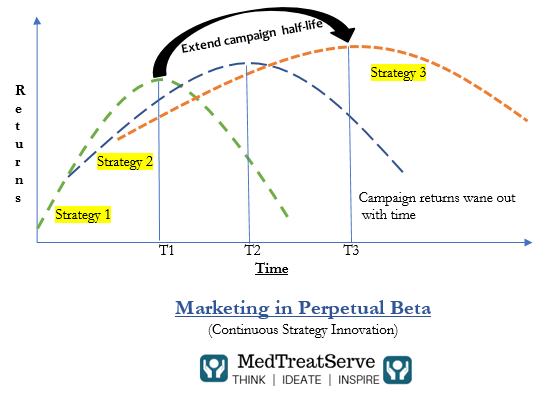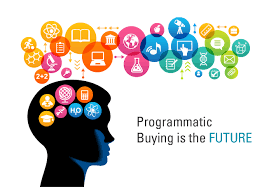Marketing has undergone a remarkable transition in the past decade especially since the advent of the digital revolution. From traditional, archaic methodology of long-term planning cycles and annual business reviews, the Agile Marketing in today’s time has evolved to be in an always-on adaptive mode.
Creative thinking has always been lauded in marketing echelons and has been the fulcrum around which the campaigns are born, bred and boasted.
But marketers of yesteryears (and many today as well) have been beleaguered by unwieldy long planning cycles and snail-paced campaign execution.
However, lately, marketing has witnessed a radical transformation from being reactive to proactive, from being hard-wired to iterative, from being siloed to integrated, from being dictatorial to democratic, from being rigid to Agile.
This change has come about thanks to the digital disruption that has happened all around us and due to the adoption of Agile management methodologies by today’s marketers which they have borrowed from their software and project management contemporaries.
Agile management is centered around the concept of breaking the tasks into short spans of work (called Sprints) that are reviewed frequently and further course of actions are adjusted or recalibrated based on outcomes of each Sprint. Outcome or result of each sprint complements the overall objective or task at hand.
Here are some of the most common management concepts that make a company Agile and Lean.
1. Scrum + Kanban = Scrumban
Scrum
Scrum is the most popular Agile Management concept that involves breaking a job into bite-sized tasks performed in sequence.
These tasks or fixed-length iterations, better named as Sprints in Agile management lexicon, involve a commitment by the team to completion of work within the pre-defined timelines, spanning from a few hours to a week maximum.
Scrum teams are typically small-sized and cross-functional.
A Scrum leader is empowered to control planning, execution, and timelines of each task keeping in mind the execution of an overarching job, say implementing a marketing campaign, or closing a sale.
Daily review meetings are done to assess completion of tasks in hand, bottlenecks faced and prioritize amongst the pending tasks from the backlog.
Short iterations also reinforce the importance of fast feedbacks from team members enabling prompt course corrections.
Kanban
Kanban is another Agile management concept that focuses on visualizing the workflow and minimizing work-in-progress.
Typically, tasks are divided into 3 columns in a typical Kanban board. Tasks to be completed go in To-Do column, these tasks are moved to the adjacent In-Progress column as they are taken up and finally make it to Done column once they are complete.
Kanban board lends transparency on the status of job undertaken and gives a snapshot of what’s happening in that workflow.
Prioritization of workflow is an important feature of a Kanban board. Pending or overdue tasks from Backlog are pulled into the To-Do column depending on how important or critical are they in the completion of overall objective or job (campaign)
Scrumban
Scrumban is best of Scrum and Kanban put in one.
Short iterations that are driven by empowered teams (taken from Scrum), who pull tasks from a prioritized backlog while enforcing strict limits on the amount of work in progress at any given stage of the workflow (taken from Kanban).
Performance reviews are done on demand when the queue of tasks to be done becomes close to empty.
A Kanban board is used to coordinate the whole process. This graphic below beautifully represents an amalgamation of the two most fundamental techniques of Agile management- Kanban and Scrum, to denote how a Scrumban works.
 Wikipedia’s definition of Minimum Viable Product (MVP) is a product (or a service) with just enough features to satisfy early customers and to provide feedback for future product development.
Wikipedia’s definition of Minimum Viable Product (MVP) is a product (or a service) with just enough features to satisfy early customers and to provide feedback for future product development.
Minimum Viable Product or MVP is a pared-down version of product or service that is launched to a limited market to gauge feedback from customers.
MVP compromises on a scale of launch but never on features and benefits
It is a Prototype or Beta version of a product that is at a cross-section of being “minimum” (testing phase with minimal investment and the targeted audience) and yet “viable” (has demand and acceptance in the market)
MVP is an Agile management concept that focuses on the iterative approach to bring a product to the market; run hypothesis, get customer feedback early in product’s lifecycle, quickly implement such learnings during a controlled, testing phase of a product launch thereby limiting risk and magnitude of failure.
MVP is a potent tool for product innovation that has a Build-Learn-Measure loop at its core and catalyzes marketing innovation as depicted below.
- Product ideation and prototype building – This involves Alpha testing which means presenting the product to internal stakeholders before soft launching;
- Beta testing- Soft launching the campaign or product to market; Hypothesis testing
- Experimentation- A/B testing and iterations during soft launch;
- Data gathering and measurement- Involving Data analysis, customer feedback, website conversion matrix, and
- Finally adapting Learnings to improve the product before Scaling and a full-scale launch
Minimum Viable Product signifies the famed thought quoted by Warren Buffet…
Never test the depth of a river with both feet
MVP is a risk-mitigating strategy deployed to test the hypothesis about a product before making a commitment to investment
The mantra here is to Fail Early rather than Fail Never.
3. Agile Sprint Cycles Vs. Waterfalls
Agile marketing is all about increasing tempo at which the marketing operates. And that tempo, momentum, can be brought about by thinking in terms of small, incremental tasks that add up to a job rather than working tediously, for months on that big-bang product launch or a campaign launch.
Planning a big marketing campaign requires thorough planning, conceptualization, inter-departmental coordination, resource allocation, project development and importantly, budgetary support.
Quintessentially, the conventional marketers have been dealing with such campaigns through elaborate prior planning, strategy building and positioning for the campaign, and forecasting the result of campaigns deep into future (mostly year).
Such traditional approach to project management is called the Waterfall model. It divides a project or campaign into distinct stages. There is no overlap between these stages. That means unless the previous stage is completed, work on the subsequent stage cannot start.
Imagine a marketing campaign that you intend to run. The campaign would start with campaign planning, ideation and conceptualization, product development and resource allocation, strategy making and go-to-market strategy, and finally the launch. This cycle would usually take from up to months to even years depending on the industry you are in.
Most marketing campaigns and plans, unfortunately even today, are conceived on basis of such Waterfall models.
Problem with such models is that there are chances of falling off the course very often if any of cogs in the wheel do not perform. It does not allow fast course correction. And we claim to foresee and predict far into the future based on instincts and guesses rather than facts and evidence.
On the other hand, deconstructing a campaign into short spanned Sprints allows timely flexibility and maneuverability in making a course correction before it is too late and before much time, money and work-hours expended.
Each Agile Sprint includes upfront planning or end-in-mind or a goal recognition, a modest block of time to produce meaningful but not large deliverables, and a review to collect feedback from stakeholders or market.
Usually, a big marketing campaign cannot be completed in a single sprint. Instead, it is managed through a sequence of sprints, one after the other.
Each Sprint makes incremental progress towards achieving the preset objectives of a campaign.
Sprint planning involves the constant clearing of activity backlog by shuffling tasks therein based on priority. Hence, the backlog involves continuous addition, removal, and alteration of tasks that would move into the To-Do column of Kanban board.
Since the whole purpose of Agile marketing is to reduce turnaround times, the activities or Sprints are usually timeboxed that is to say that they have fixed window of completion or execution to keep the whole cycle moving fast.
4. Perpetual Beta mode in Marketing
Most of us would have often heard of Alpha and Beta Testing from software and mobile app developers.
Alpha testing refers to running rough ideas and proof of concept amongst internal stakeholders like investors, start-up incubators and senior management team within the company. The product is in prototype stage not yet launched in the market.
Beta testing, however, refers to launching the product in the market, although in limited scale to select customers in order to test the hypothesis, gauge market response and make finer modifications before promoting it on a mass scale.
Marketing in today’s times is in a constant state of flux and disruption. They cannot sit on their laurels for long. The half-life of a successful marketing campaign is shrinking.
The biggest challenge for marketers in today’s fast and dynamic digital age is to ensure their product is not only relevant to customer’s everchanging needs but is also in front of their eyes or within reach when they wish to buy.
This requires Marketing and Sales to be in a constant phase of alertness, responsiveness, and alacrity to outsmart the competition by upgrading their product USPs regularly before demand wanes.
In fact, it is not even a question of catering to demand but creating demand. Marketing has to continually innovate to stay ahead of the curve and prolong campaign’s lifetime.
This need of being on a constant vigil has compelled marketers to adopt a very suitable concept from the software industry. It is a state of being in a constant phase of innovation, discovery, learning and executing. This state of being in forever-innovation is called Perpetual Beta.
Digital transformation has compelled organizations to constantly evolve and adapt to digital dynamics. The shelf life of marketing campaigns (Online, PR, OOH) is shrinking.
Marketers are challenged on how to extend the profitable half-life of campaigns by adapting their strategies and implementing their Plan-Bs.
Campaigns are executed with motive stay relevant to customer needs over a longer period of time and thereby extract maximum #CustomerLifetimeValue.
5. Incremental marketing
Marketers have always had a penchant for making big-bang releases with a thud factor. A big new campaign… big website launch… a million-dollar sale closure… big new product launch etc.
And frankly, it is this big factor that has kept marketer’s mojo alive over years.
However, with the changing times when digital dynamics has taken over the way we go about things and when agility and adaptiveness are key to success, such one-time, spaced out thud-events neither suffice or cope up with frequency and spontaneity required in marketing.
Agile marketing recognizes that Big ideas are often best realized through series of many small ideas
As the Nobel Prize-winning chemist Linus Pauling famously said,
The best way to have a good idea is to have a lot of ideas.
An incremental marketing approach simply focuses on achieving Small Wins, each of which contributes towards the execution of that big campaign or marketing program.
Let us take some practical examples that marketers face routinely.
Let’s say while launching a website, you might build the initial version—your first increment—with a modest amount of content, in a small number of sections.
In subsequent increments, you would then add more content, more sections, more advanced features, and so on.
Then you make the website mobile responsive and SEO friendly
Next, you add a payment gateway to your website for your visitors to buy products from your website.
All these are additions to the basic version of your website (=increments)
Over many such increments, the website can grow to be quite sophisticated. But it starts out small and expands one manageable piece at a time.
Ok, let us take a Sales example now….
Say you were vying for that multi-million dollar contract and have been in discussions with your client over past 6 weeks.
Most Sales professionals have a propensity to go for the jugular right in the first meeting with a client. I mean they want to close a sale without spending enough time with the client to understand what they need and how can their product provide a solution to them.
On the other side, Sales wizards who make sure that they traverse with clients through their buying journey, understand their requirement, adapt proposition to suit their needs, ensure they are talking to right decision makers who have budget for investment, address any red-flags early, give clients a demo or peek-a-boo of product features and only then go for the kill!… Yes, I mean ask for a sale.
And that is exactly what Agile management propagates.
Agile marketing is all about accelerating the speed of closures of a Sprint; be it in Sales or in the Marketing function.
The prompt rate of such small incremental wins ensures that the overall project, or campaign or marketing program or for that matter a Sales meeting is moving steadily
Incremental marketing lends weight and importance to smaller wins that add up to achieving a larger goal.
Modern Sales concept is based on the concept of ABC that is Always Be Closing and incremental marketing perfectly fits into this way of thinking.
6. Platform thinking in Marketing
Platforms is another concept of Agile and Lean management that have recently taken relevance and acceptance amongst a lot of forward-looking, fast-adapting organizations.
A Platform is standard base, a foundation or a framework that multiple organizations may use to build functions on top of it with a diverse range of experimental possibilities but within the platform’s well-defined borders.
Platforms provide a foundation for organizations to build their services on it while defining a set of boundaries or rules for organizations to adhere to. In that sense, Platforms brings cohesion and linearity in terms of governance and functioning of a platform (each Platform have their rules to conform to by organizations using them).
Many organizations have started using open-sourced marketing Platforms to supplement tasks without investing in developing a fully in-house infrastructure. Such marketing Platforms are flexible in use and lend creative freedom to organizations to execute their jobs.
A task could be developing a website on content management systems like WordPress or Drupal; using Marketing Automation system like MailChimp; Social Media channels platforms like Facebook Page, LinkedIn Company Profile or Twitter handle etc.
For instance, Facebook is a platform for us to connect with friends, LinkedIn is a professional Platform to interact and share insights with professionals. Even Google, in its essence, is a software Platform that lets us browse internet through an interconnected world-wide web of sites.
Such shared marketing Platforms help not only in achieving scale and reach but also instills diversity and crowd thinking.
Be it open-source programing language like R used in data analytics or lending mobile operating systems to users for developing applications (for example Apple’s App Store or Google’s Play Store) or for that matter even white-labeled software used for video conferencing, all these are a perfect example of how digital Platforms help organizations to reach customers.
Concluding With A Caution…
Marketers can improve their canvas and sync their repertoire to digital adaptiveness and agility by adopting Agile and Lean management concepts, borrowed from software and project management industry.
However, there is a Caveat here.
We must feel free to choose which ones are right for your organization. Do not force-fit them if does not make sense to your work.
Having said that, it is imperative for today’s marketers to be abreast with these concepts and apply them in their work settings wherever possible.
Knowledge, experience, and expertise in implementing these Agile management concepts would help in bringing effectiveness and efficiencies in campaign execution and sale closures.
Agile marketing, at its heart, is about giving individual marketers and small marketing teams greater ownership of their work and significant latitude in how they achieve their goals.
Every marketer is encouraged to ideate, experiment, iterate, execute and learn. Everybody innovates. Everybody learns. Everybody grows.
The digital world and the convergence that’s brought about by marketing and software has now enabled the rise of a Full-Stack Marketer.
The companies that are best able to stir the minds and souls of such marketers—and give them powerful organizational platforms on which to achieve remarkable things—will dominate the talent war of modern marketing.
Feel free to comment below on what you think would enable marketers to become 10X full-stack marketers.
Do you think software and project management concepts of Agile and Scrum can help organizations to enhance their productivity and upsurge the momentum?















2 Responses
An excellent elucidation of the marketing paradigm!
Beautifully elucidated!